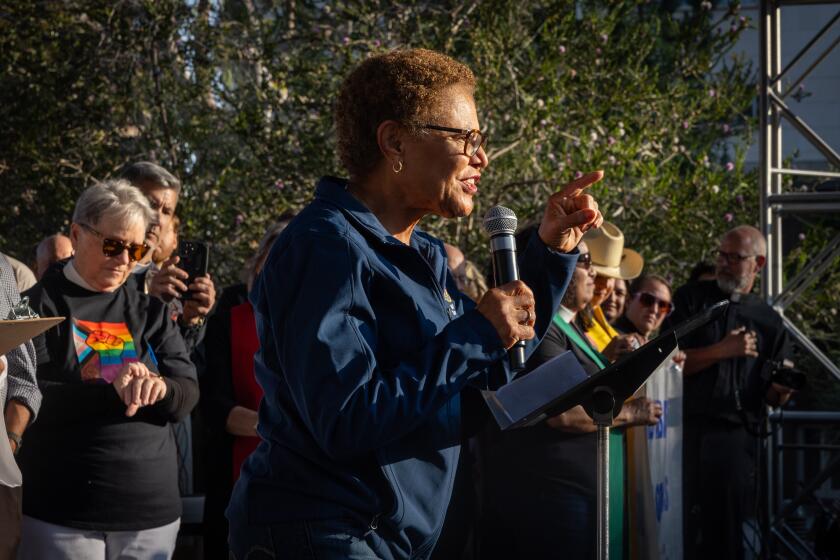ELDER CARE: Caring for California’s Aging Population : Eldercare May Become No. 1 Women’s Issue of the 1990s
- Share via
Just as child care was one of the leading feminist issues of the 1970s and ‘80s, eldercare will become the No. 1 women’s issue of the 1990s, according to a report issued last Mother’s Day by the Older Women’s League.
“On average, women today spend 17 years of their lives caring for children and 18 years assisting aged parents. For the first time ever, American couples have more parents than children. The result will be a significant decline in the number of family care-givers at the same time the need increases dramatically,” the report said.
Women are being squeezed from both ends, warned the league, a nonprofit advocacy group with more than 120 chapters.
On one side, women have longer life expectancy than men, which means women tend to face more years when they may need nursing care. On the other side, women are much more likely than men to be the ones to care for parents when and if parents become sick or enfeebled.
Among children who care for their parents, daughters outnumber sons three to one, the league’s report said.
Yet rarely is care-giving a full-time job, the report said. About 52% of the married mothers of infants and 55% of women caring for elderly relatives are in the work force. Women working full time are four times more likely to be primary care-givers to the elderly than are working men.
Proving care for the elderly outside the home is also a costly proposition. The report said the average annual cost of full-time care in a nursing home is $25,000, compared to an average of $3,000 spent on day-care for children.
“In 1989, a woman whose children are grown has completed, on average, less than half the care-giving she will provide during her lifetime,” said Lou Glasse, president of the league. “Far from being free of responsibility, in many cases her most difficult years lie ahead.”
The problem is not limited to an unlucky few, the study concluded.
About 89% of American women over age 18 will provide care to children, parents or both. About 31% will care for children and parents simultaneously, the study said.
Today, the average care-giver for the elderly is 45 years old, female and married. But as many as 35% of care-givers to the elderly are over 65 and 10% are over 75.
The league’s study, entitled “Failing America’s Caregivers: a Status Report on Women Who Care,” was partly funded by the Charles H. Revson Foundation and the American Federation of Federal, State, County and Municipal Employees, AFL-CIO.
The study is based on statistics derived from census data and dozens of congressional, academic and other independent studies, as well as original research by the organization.
BY THE NUMBERS
LIVING ARRANGEMENTS AMONG OLDER AMERICANS
(Excluding Institutions)
Living Arrangement Male Female Living with spouse 75% 38% Living with relatives 7% 18% Living alone 15% 41% Living with nonrelatives 2% 2%
Source: U.S. Census, 1986
THOSE PROVIDING CARE TO OLDER AMERICANS
Relationship of Caregiver to Recipient Male Female Spouse 37% 10% Child 24% 34% Other Relative 23% 35% Paid Worker 16% 21%
Source: U.S. Census, 1982
* Number of Persons 65+ Rank: Thousands
1. California: 2,848
2. New York: 2,283
3. Florida: 2,071
4. Pennsylvania: 1,736
5. Texas: 1,583
* 65+ as Percent of Population
Rank: Percent
1. Florida: 17.7%
2. Pennsylvania: 14.6%
3. Rhode Island: 14.6%
4. Iowa: 14.5%
39. California: 10.6
* Percent Change in 65+ 1980-86 1. Alaska: 55.3%
2. Nevada: 51.3%
3. Hawaii: 35.8%
4. Arizona: 33.2%
17. California: 18.0
More to Read
Sign up for Essential California
The most important California stories and recommendations in your inbox every morning.
You may occasionally receive promotional content from the Los Angeles Times.













